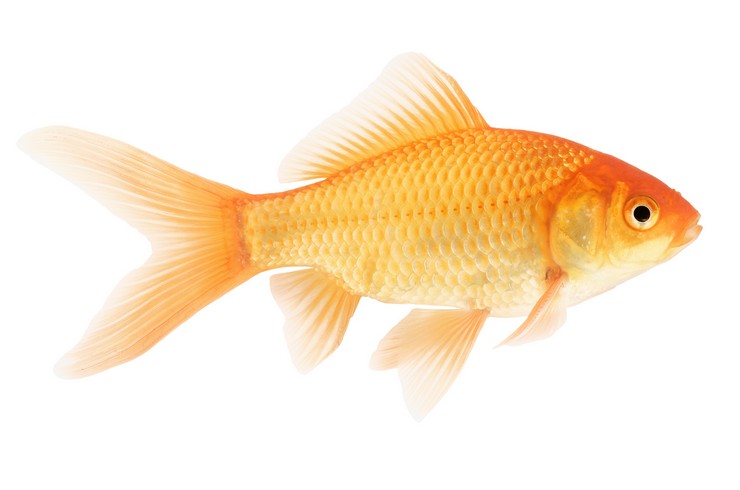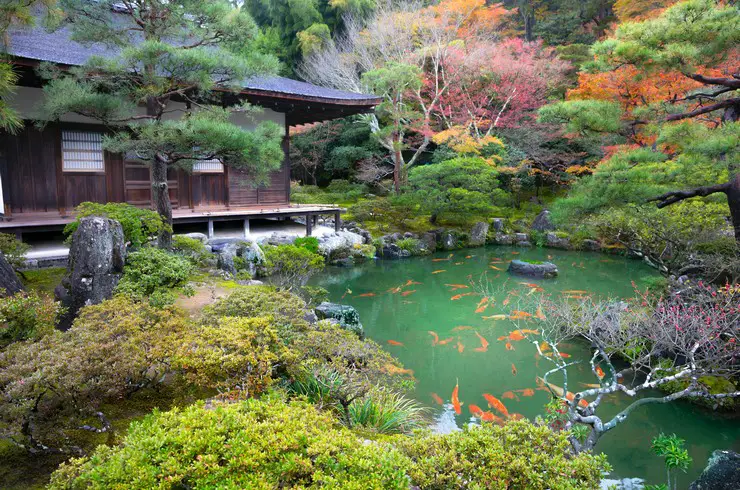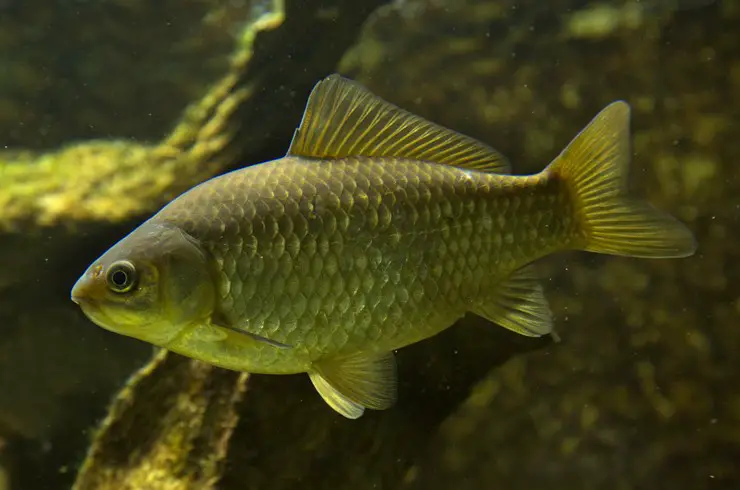The goldfish (Carassius auratus) is by right the most recognizable species of ornamental fish, which takes the honorable first place in the list of the most popular aquarium inhabitants.
General information
The goldfish got its name, first of all, for the color of the scales: the standard body color is reddish-golden, often with a metallic sheen. There is also a version that the fish were nicknamed gold for their high cost in those days when they just came to our country. Nowadays goldfish for aquaristics is bred on an industrial scale in special fish farms, so there is no difficulty in getting almost any kind of goldfish in your aquarium.
Man has been keeping and breeding goldfish for several millennia. During this time, a huge number of varieties were bred, differing both in the color of the scales and in the shape of the body. Looking at all this riot of bright colors and unusual forms of goldfish, it is hard to believe that their progenitor was a simple gray fish from the Karpov family.
Appearance
Depending on the breed, the goldfish can have an elongated, laterally compressed, or short body with a rounded abdomen. Each goldfish has enlarged gill covers, hard notches on the first fin rays, and pharyngeal teeth – additional jaws in the throat or pharynx.
The structure of goldfish scales also depends on the breed characteristics: they can be large, small, or absent altogether in some areas.
The most popular color of the body of a goldfish is red-gold, but there are forms with a different color: bronze, black, spotted, bluish, etc. The belly of a goldfish is always colored lighter than the back.
The fin variation is also quite wide. The caudal fin can be single, bifurcated, veiled, or another unusual shape. The dorsal fin of a goldfish is short, veiled, or absent. The eyes are large, slightly protruding. In some breeds, they can be greatly enlarged and have a bizarre shape.
The minimum size of an adult goldfish in good conditions is rarely less than 15 cm. Certain breeds can grow up to 30 cm. Goldfish are considered long-lived among fish. The average life expectancy is 13-15 years. The record for the lifetime in an aquarium belongs to an English goldfish named Tish, which lived for 43 years.
Gender dimorphism in goldfish is not pronounced; the female and male can be identified only during the period of preparation for spawning.
History of appearance/discovery
The inhabitants of ancient China had an extensive culture of keeping wild fish in a variety of cages and barrels. Periodically, very beautiful bright representatives came across, which were used for further breeding. The spread of Buddhism also contributed to the emergence of unusual forms. According to the canons, it was strictly forbidden to kill fish, even physically disabled ones. They were settled in special “merciful ponds”, where they lived out their days until they died of natural causes.
The first written mentions of “red carp” are found already in Chinese sources of the 3rd – 4th centuries. Probably, these were separate mutations of goldfish with a reddish body coloration. The appearance of such fish was episodic. Most likely, the characteristic persistent red color was obtained as a result of breeding work in VII-VIII.
After the 960s, goldfish became popular pets. At that time, only wealthy people could maintain them, since they had enough space for arranging private ponds and swimming pools.
Gradually, the demand for goldfish increased, the price for them fell, and gradually in many Chinese homes, they became common pets.
At first, the fish spread in Indochina, at the beginning of the 16th century they came to Japan. Local breeders have developed a large number of new breeds of goldfish and have become recognized leaders in this field.
The first goldfish came to Europe in the 17th century. In the beginning, their cost was very high, and only the wealthiest people could afford to keep goldfish. A century later, goldfish have spread widely throughout Europe.
The first evidence of the appearance of goldfish in Russia dates back to the 15th-16th centuries, usually gifts from foreign ambassadors. But the widespread distribution of fish begins in the 17th century during the reign of Tsar Alexei Mikhailovich, and later of his son, Peter I.
Nowadays, aquarists have access to a wide selection of goldfish breeds, which are grown on specialized fish farms (mainly in the countries of Southeast Asia).
Habitat
Since the currently existing goldfish are the result of the selection of goldfish, it is not possible to meet them in their natural habitats. The offspring of goldfish released into a natural reservoir is usually reborn into its original form over several generations.
Goldfish (Carassius auratus) is a form of crucian carp, artificially bred in China from goldfish. The mention of the “goldfish” (gold-colored crucian carp) is first found in the Chinese chronicles, the natural range of this species includes the rivers of the southern Chinese provinces.
The silver carp (formerly Carassius auratus, now Carassius gibelio), a wild ancestral form of the goldfish, was originally distributed in the reservoirs of Central Asia and Siberia, as well as in the lower reaches of the rivers of the Aral Sea. Later, the goldfish was artificially settled in many water bodies of Europe and Siberia. Plants, detritus, small crustaceans, and insects serve as food for it. At the beginning of the 16th century, these fish were first exported to Japan and China, where they decorated the imperial gardens.
In some reservoirs, only female goldfish live, which spawn with males of related fish species (roach, goldfish, tench, bream, carp, and others). At the same time, male reproductive cells of closely related species stimulate the development of eggs, no hybrids are formed, and only females appear in the offspring, supporting the existing population.
In appearance, gold and silver carp are similar. In some water bodies, these species live together. In this case, there is a gradual displacement of goldfish by silver carp. Silver and goldfish can interbreed and give hybrids that are found in some water bodies.
There is a problem with the introduction of aquarium goldfish into the natural environment. So, in Australia, some aquarists released their fish into natural reservoirs, where they reached significant sizes on a rich food base. The largest of these individuals weighed 1.9 kg. At the same time, goldfish pose a threat to the rest of the inhabitants of the reservoir – they quickly eat higher plants and algae, which creates a shortage of food, can destroy eggs of other fish, and spread infections.

